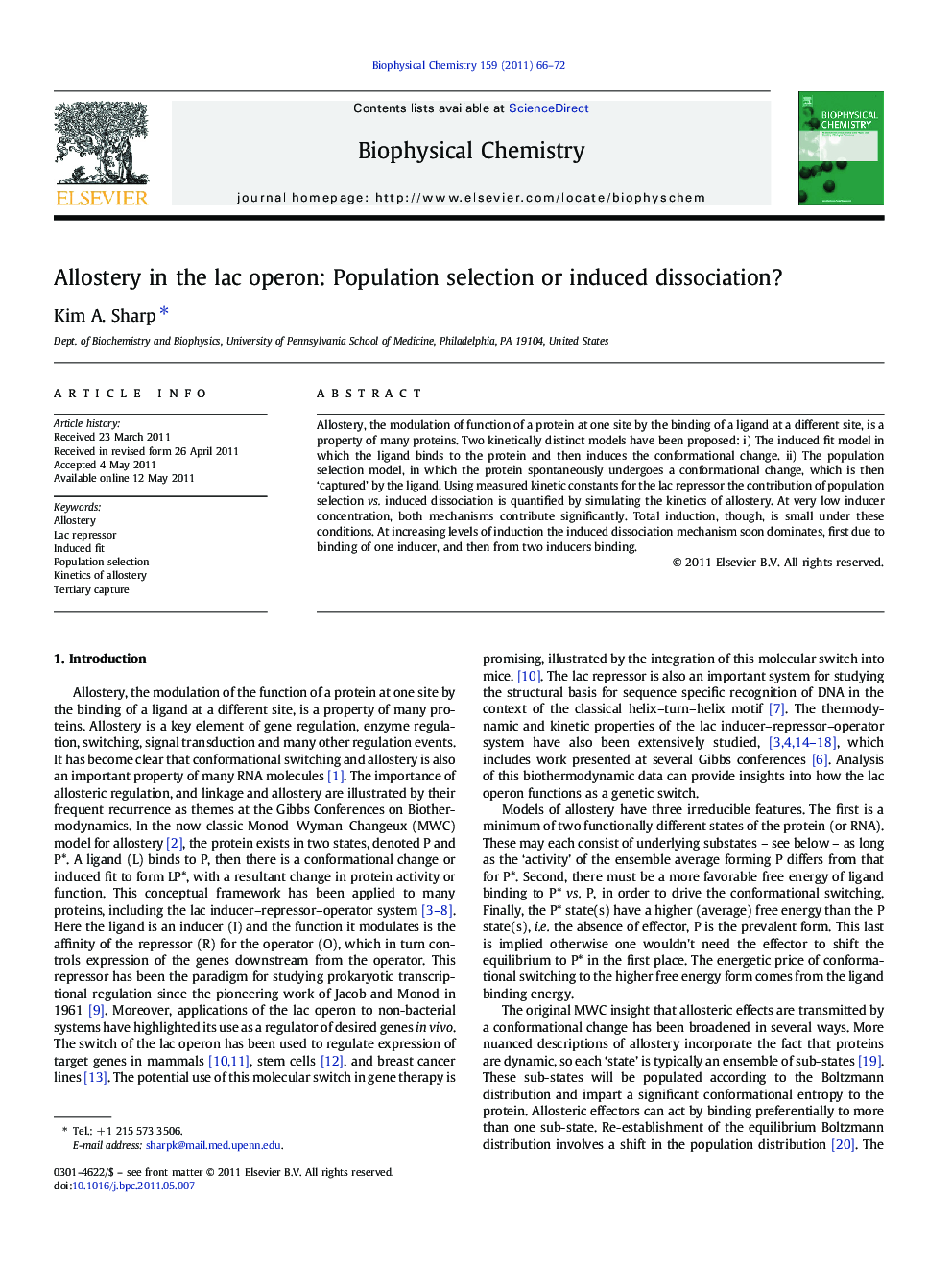| Article ID | Journal | Published Year | Pages | File Type |
|---|---|---|---|---|
| 5371395 | Biophysical Chemistry | 2011 | 7 Pages |
Allostery, the modulation of function of a protein at one site by the binding of a ligand at a different site, is a property of many proteins. Two kinetically distinct models have been proposed: i) The induced fit model in which the ligand binds to the protein and then induces the conformational change. ii) The population selection model, in which the protein spontaneously undergoes a conformational change, which is then 'captured' by the ligand. Using measured kinetic constants for the lac repressor the contribution of population selection vs. induced dissociation is quantified by simulating the kinetics of allostery. At very low inducer concentration, both mechanisms contribute significantly. Total induction, though, is small under these conditions. At increasing levels of induction the induced dissociation mechanism soon dominates, first due to binding of one inducer, and then from two inducers binding.
Graphical abstractDownload full-size imageResearch Highlights⺠Allostery can in principle be mediated by induced fit or population selection. ⺠Kinetics of allostery in lac repressor were simulated using measured rate constants. ⺠Population selection and induced dissociation are both significant at low induction levels. ⺠Induced dissociation dominates at intermediate and high levels of induction.
